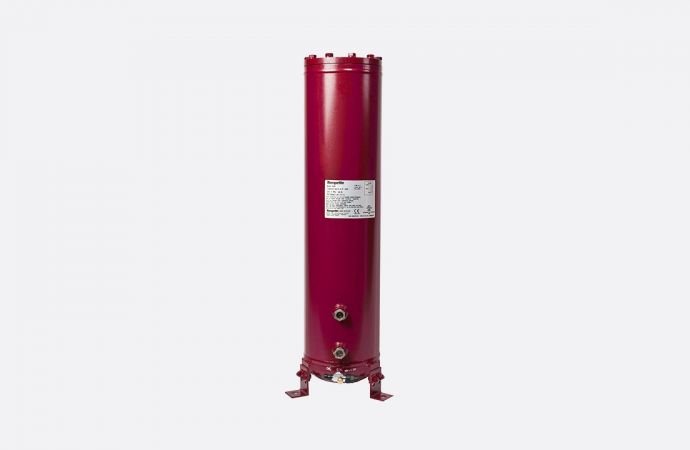Westermeyer Industries’ Adam Chapman takes aim at perennial problems in HVAC&R oil management in podcast interview
_1612774062.jpg)
Adam Chapman, Sales Manager with Bluffs, Illinois (U.S.)-based, Westermeyer Industries, let loose his frustration about the poor oil management he sees in many HVAC&R installations in a chat with the hosts of the HVACRadio podcast.
Take adjustable oil regulators, which maintain the oil level in compressors. “Those things are the bane of my existence,” he said in an episode released on January 25. “Let’s go with fixed-level [oil regulators] and stop messing around with adjustment mechanisms. People get in and adjust those things and all bets are off.”
This is one example of Chapman’s effort to “create awareness in the industry and try to remove problems existing forever,” he said.
Catering to commercia and industrial applications, Westermeyer manufactures oil separators (conventional, centrifugal and coalescing) and oil reservoirs, as well as oil filters, liquid receivers, accumulators, condensers and DX chillers. Its product offerings include transcritical CO2 (R744) oil separators and horizontal oil separators for ammonia (R717).
Chapman explained that while coalescent oil separators are justifiably seen as very efficient, that only remains true as long as they are sized properly according to the system cooling load. If they are sized correctly, they are pretty much “bulletproof with regards to oil separation and removing contaminants from the system.”
Those things [adjustable oil regulators] are the bane of my existence," Adam Chapman, Westermeyer Industries
However, for a contractor, or an end user having system problems, adding extra oil, or even installing a coalescing oil separator, is not the fix-all solution. If you don’t have a properly operated system, you won’t get the higher efficiency out of the coalescing unit, Chapman noted. Also, a system too full of oil can end up clogging the filter of the new coalescer, he added.
There are also downsides to coalescing oil separators, among them the higher pressure drop than in centrifugal (helical) types, the additional cost, and a filter that has to be changed regularly (though the filter is easily accessible).
When queried about when filters should be changed, Chapman said that at 12psi (0.83bar), or higher, pressure differential, the filter should be changed immediately. “But when you're looking at energy consumption and system operation, the filter really should be changed out at maybe anywhere from 5 to 8 psi [.34 to .55bar] differential.”
Oil reservoir sizing is another common challenge, he noted, especially in older systems where the load might have changed over the years. In retrofits, he recommends a 2gal (7.6l) size for a four-compressor rack; 3gal (11.4l) for four to six compressors, and 4gal (15.1l) for six or more compressors.
New R717 website
Among its new initiatives, Westermeyer is getting ready to launch a new website for its ammonia industrial products.
Through its parent company, Mueller Industries, Westermeyer is putting the finishing touches on a series of ammonia pressure relief valves. “We finalized the design for both a cartridge style and a stand-alone angle relief valve for ammonia,” Chapman said.
The company has also launched a Quick Select mobile app, to help customers find the components they need. The app supplements Westermeyer’s standard product catalog, and customers can enter the data from their refrigeration or AC systems, and the app will guide them towards the appropriate component. For example, the app can help calculate the required oil separator and receiver capacity.
The app is currently only on iOS, but Westermeyer expects to launch an Android version by the end of 2021, Chapman said.
Related stories



